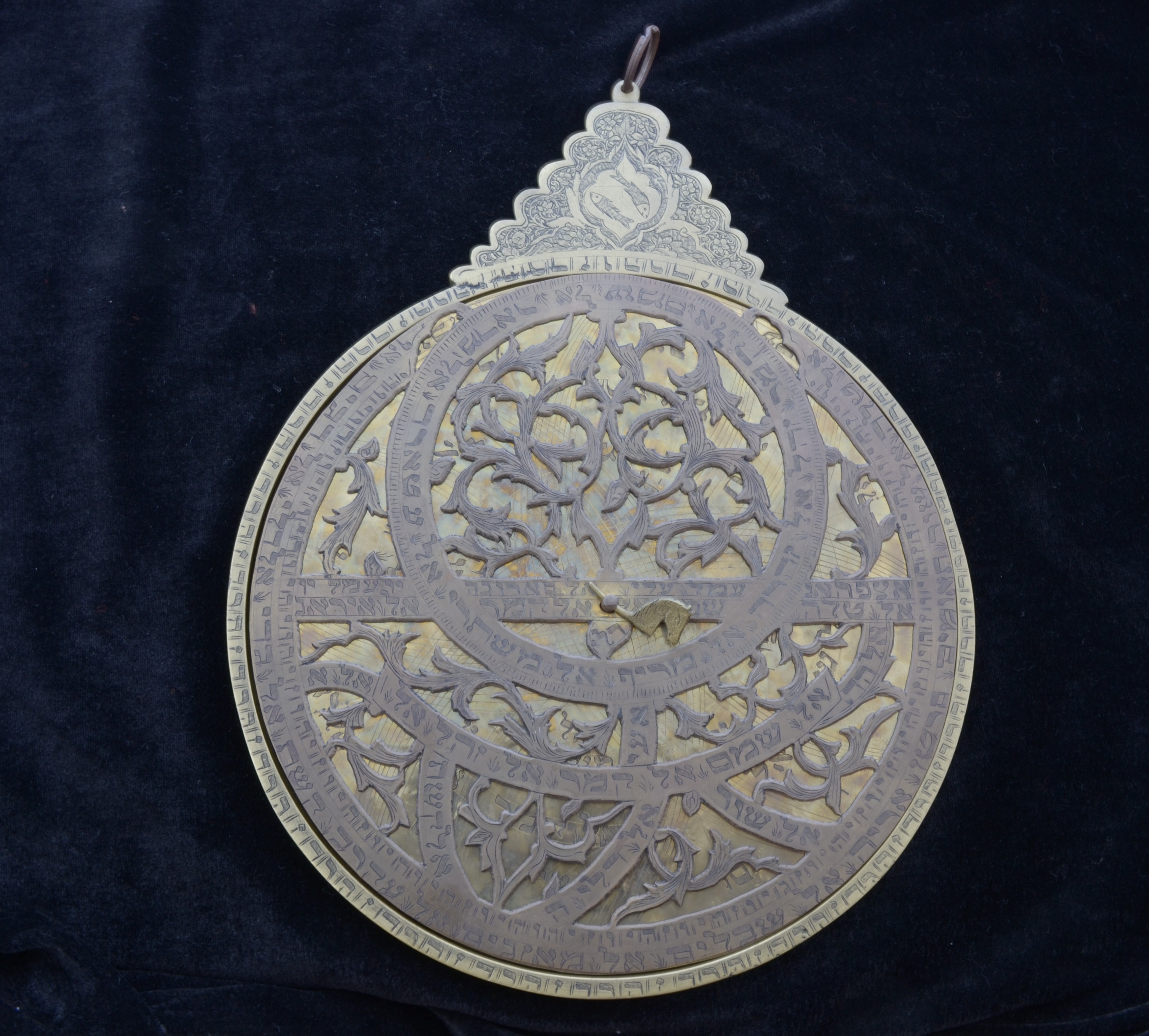TODAY PETRA G. SCHMIDL
Petra G. Schmidl (http://www.uni-bonn.de/~homepage/Islamwissenschaft/Schmidl/) is an expert in pre-modern astronomy and astrology in Islamicate societies, mainly interested in the interacting of astronomy and politics, astronomy and religion. Another major point of her interests concerns astronomical instruments, in particular astrolabes as a source for the history of astronomy and astrology. She is research assistant at Bonn University and currently a visiting fellow at Erlangen-Nürnberg University (International Consortium for the Research in the Humanities).
A year ago, I met Petra in Frankfurt and she introduced me to the rich archive of the former Institute for the History of Science at Frankfurt University, which has been instrumental for my research. I also met in Frankfurt David King, the leader expert on medieval astrolabes, and Benno van Dalen, who is now working on a research on Ptolemaeus Arabus et Latinus, a project dedicated to the edition and study of the Arabic and Latin versions of Ptolemy’s astronomical and astrological texts. All three were very helpful at the initial stage of my research.
JRA: How did you become interested in this instrument?
PSh: In seminars held by Professor David King at the former Institute for the History of Science at Frankfurt University, Germany, I first learned about astrolabes. From the beginning, still being an undergraduate student, I was completely fascinated by these instruments and their use. The unique combination of science, history, and arts as reflected in the astrolabes arouse my curiosity. I became eager to learn more about their use, their history, and their historical context.
JRA: How many astrolabes are there in the world and where do they come from?
PSh: In 1932, Robert T. Gunther described in his “Astrolabes of the World” 336 astrolabes. Most of them are preserved in the rich collection of the Museum for the History of Science in Oxford, whose curator he was. In 1973, Derek de Sola Price et al. counted in their “Computerized Checklist” astrolabes, mariner’s astrolabes, and astrolabic quadrants up to 4000 (with gaps in the numeration). The preliminary Frankfurt catalogue initiated by David King back in the 1990s describes around 800 astrolabes. Approximately, four sevenths are of Eastern, three sevenths of Western provenience (The descriptions of later astrolabes, after ca. 1500, are incomplete; http://web.uni-frankfurt.de/fb13/ign/instrument-catalogue.html). Until today, astrolabes are made for museum, collections, and others interested in these instruments. Only a few astrolabes display Hebrew inscriptions or additions in Hebrew script.
JRA: Why and how did Muslims introduce the astrolabe into history?
PSh: Reasons of the Muslim interest in the astrolabe are difficult to name. Was it a general interest in the heavens? Was it a specific interest in timekeeping and orientation? Was it one of the other reasons, why people practice astronomy? Probably, the astrolabes’ decorative and mysteriously looking appearance may be another reason. However, first evidence of the Muslim interest in the astrolabe becomes obvious in the earliest instruments preserved from 8th- and 9th-century Baghdad, and in the oldest Arabic texts on the use of the astrolabe, e.g. al-Khwarizmi’s treatise (Baghdad, b. ca. 800).
Were Muslim scientists the inventors of astrolabes?
Muslim scientists – i.e. scientists living in the Islamic realm – were rather the promoters and developers of the astrolabe than their inventors. The textual evidence clearly demonstrates that the astrolabe has its roots in Greek traditions. The texts by John Philoponos (Alexandria, d. ca. 570) and Severus Sebokht (Nisibis, Kennesrin, b. ca. 575) were one way, though definitely not the only one, the Muslim scientists learned about the astrolabe.
JRA: Why were astrolabes so popular among Muslims and non-Muslims?
PSh: Astrolabes hang in the office of Albus Dumbledore, the headmaster of the “Hogwarts School of Witchcraft and Wizardry”, in the film called “Harry Potter and the Chamber of Secrets”. Apparently, the combination of beautiful decorativeness and sophisticated sciences makes the astrolabe so popular.
JRA: Can you tell us what kind of artefact is an astrolabe and if there are different kinds of it?
PSh: Astrolabes are multi-functional and multi-purpose astronomical devices. They can be used for observation, calculation and teaching, for amusement, decoration, and representation. To to put it short: The astrolabe is a two-dimensional model of the three-dimensional world that you can hold in your hand and put into your pocket.
JRA: Why are there so many fake astrolabes and what would be the definition of a fake astrolabe?
PSh: Probably, the question is easier to answer when beginning at the end. In my view, a fake astrolabe pretends to be “something else”, for example, to be older, to be related to a more famous person, or to be functional (although it is not). Probably, the huge interest in the instrument urges the production of modern replica – and of fake astrolabes.

‘Fake’ Jewish astrolabe in a private collection in Tel Aviv, which I studied in August 2013. Two features of ‘fake’ astrolabes -either Jewish or not- are apparent: they are not calibrated (which implies that if there are divisions they do not make sense at all) and the engravings on all the surfaces are particularly decorative.
JRA: What do you think about this project on astrolabes in medieval Jewish society?
PSh: Astrolabes are a great, though rather underestimated sources for the history of science. The project “Astrolabes in Medieval Jewish Society” is important because it takes into account both texts and instruments. It demonstrates clearly the advantage of using recourse on both types of sources.
Thanks for this, Petra!